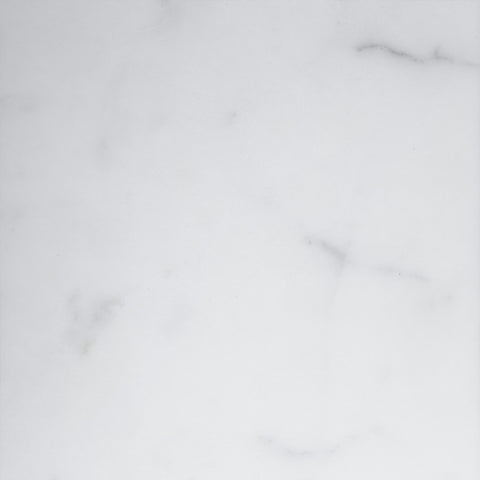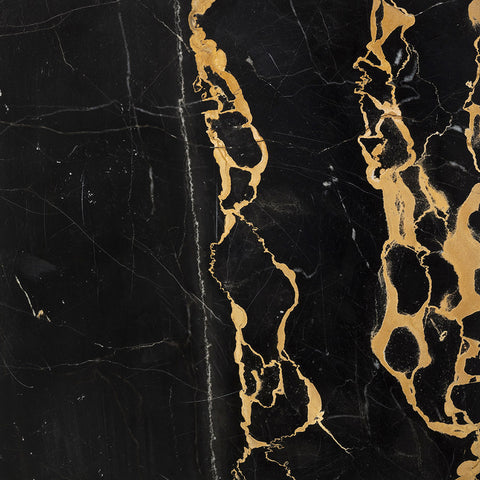Although marble enjoys a centuries-old history, today it has not lost its appeal. On the contrary, with Made in Italy pride, it continues to be used for sculptures, design works and construction. But there are different types of marble, and the Italian peninsula itself enjoys different types, depending on the area where it is extracted.
Some precious marbles Made in Italy:
The white marble of Carrara
The most famous and valuable marble of all time is the white marble of Carrara, which takes its name from the homonymous city from which it is extracted. It has a very ancient history, up to the Iron Age, and over the years has gained more and more notoriety. The very famous Pietà by Michelangelo was carved on this marble.
Its peculiarity is the homogeneous background paste, with bright granules from white to grayish; the veins are gray and discontinuous. According to the color of the background paste, we differentiate the various types of Carrara marble: White Carrara C marble, with a lighter background; White Carrara CD marble, with a darker background. This uniqueness has given life to the spectacularity and celebrity of Carrara marble: suitable for flooring, stairs, as well as for design elements, cladding or jewelry, such as those of Fiammetta V.

Statuary Marble
The White Statuario Marble, extracted from the quarries on the Apuan Alps, and used for sculptural art: being ductile, it is perfectly suitable for working with the chisel. Unlike the classic White Carrara Marble, the White Statuario is extracted in limited quantities, making it an infinitely precious good. It has an ivory background, with irregular grey veins. According to the type of veining, there are various types of Statuary marble: Statuario Venato and Statuario Extra, with extremely thin veins.

The marble Botticino
The marble of Botticino comes from the quarries in the province of Brescia and from the neighboring areas. Its peculiarity is given by the type of limestone, beige in color. This marble has low levels of porosity and absorption, and is therefore suitable for creating coatings and outdoor elements. It enjoys almost the same notoriety as Carrara marble, and can be admired at La Scala in Milan, the Vienna Parliament and the White House.

Travertino marble
One of the most important architectural structures in the world is built with travertino marble: the Colosseum. It has been quarried since Etruscan times in Tuscany, from the areas of Siena and further south in Lazio, hence the famous Roman travertino. Travertino is a calcareous sedimentary rock with an extremely unique compactness. It is both a ductile and resistant material at the same time, making it extremely ideal for construction. Depending on oxidation, it can have a white, yellow or red color.

The pearl of Sicily
It is extracted in western Sicily, from the areas of Custonaci. The name of this type of marble comes from its extremely peculiar appearance. Composed of fossiliferous limestone, it has an ivory color, with brown arabesques, which can vary in lighter shades or darker shades. The darker veins are given by the high concentration of clay minerals and iron oxidation. Like all the finest types of marble, it is used for high style urban or interior furnishings, but can also be used for both indoor and outdoor flooring.

Red marble of Sicily
Among the types of marble extracted in the Sicilian island, there is the Red Marble of Sicily, called Sunset Red Marble. You can admire it in the Christian churches in Palermo. Its peculiarity is given by the grain of brick red color, which can vary in shades from darker to lighter. In the background mass you can see small circular fossil elements of white color, giving the red marble the characteristic white punctuation.

Green Alps Marble
This type of marble is quarried in the Western Alps, in Valle d'Aosta. The green shade makes it a suitable material for interior and exterior decorations. In fact, its dark green background, with light and dark shades and irregular veins that vary from white to yellow, makes it extremely unique. It can be used for both indoor and outdoor use, but low temperatures (below zero) or rain, over time, could damage it. Consequently, it is preferable to use it for cladding places protected from the weather.

Black Portoro Marble
The precious black marble Portoro, or Portovenere, is extracted from the quarries of La Spezia, along the coast. It was also used in Roman times, for the decoration of temples, imperial villas and decorative objects. The intense black of the base is furrowed by veins of a luminous gold color, giving it an extremely elegant appearance. The extraction of this marble is extremely limited, making it even more exclusive.

Precious marbles outside Italy:
Black Marquina marble
This type of marble is extracted in Spain: it is a natural stone with a compact black background, with diagonal veins of white or light gray color. It is an extremely popular material for flooring, stairs or interior cladding. Combined with light colored marble, such as Carrara Marble, it offers the possibility to create contrasting floors of a very special beauty.

Guatemalan green marble
Green Guatemala marble comes mainly from marble quarries in India. Its peculiarity is given by the intense green color, reminiscent of the tropical lands of South America. It is an extremely valuable material, mainly used for luxurious interior coverings. The color varies from emerald green to dark green, and is characterized by dense veins of darker color.

Portugal Pink Marble
Pink Portugal marble has been mined in the Estremoz basin in Portugal since the Roman era. It is a fine-grained crystalline marble with a light pink color and light brown hues. It can be found in nature in different colors, from cream to salmon color. Pink Portugal marble, also called Rosa Estremoz or Rosa Aurora, can be used for different applications, such as in luxury cladding or in designer objects.
